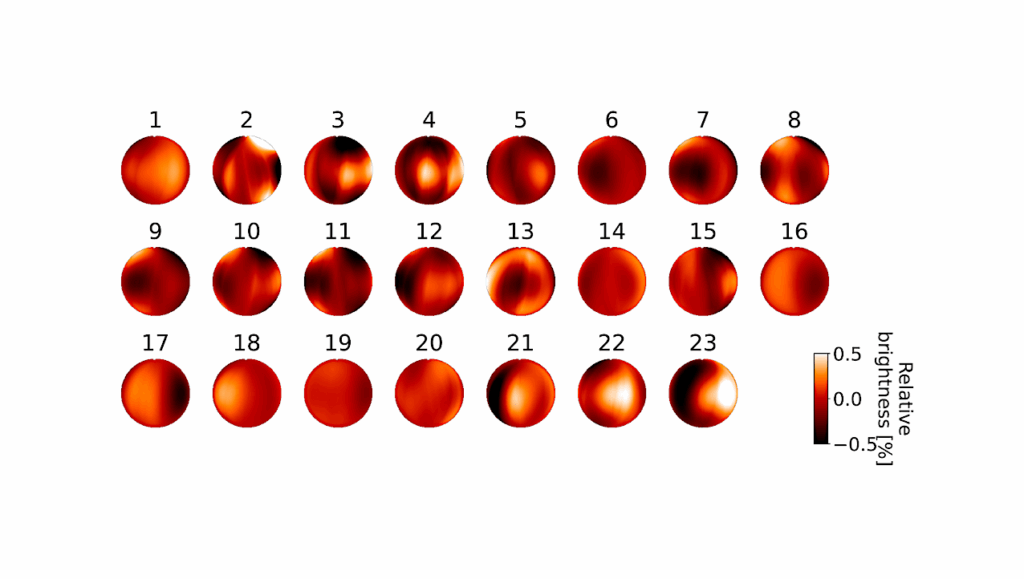Recently Discovered Planets Not As Safe From Stellar Flares As First Thought

A nearby star, the host of two (and possibly three) planets, was initially thought to be quiet and boring.
These attributes are sought-after as they create a safe environment for their planets, especially those that may be in what scientists call “the habitable zone” where liquid water could exist on their surfaces and life might be possible. But astronomers at Arizona State University have announced that this nearby star turns out to be not so tame after all.
This star, named GJ 887, is one of the brightest M stars in the sky. M stars are low-mass red stars that outnumber stars like our sun more than tenfold, and the vast majority of planets in our galaxy orbit them.
GJ 887 had initially been spotlighted for the apparently gentle space environment it provides to its recently discovered planets. In monitoring by NASA’s Transiting Exoplanet Survey Satellite (TESS), a mission to search for planets outside our solar system, the star oddly exhibited no detectable flares over 27 days of continuous observations.
And an absence of flares is a quality that favors the survival of atmospheres on planets orbiting the star, and therefore potential life on those planets.
But ASU astronomers Parke Loyd and Evgenya Shkolnik of ASU’s School of Earth and Space Exploration had their doubts about GJ 887 being all that quiet. Digging into archival Hubble Space Telescope data, they found that GJ 887 actually flares hourly.
How did they spot this difference? By using far-ultraviolet light, Loyd, Shkolnik and their collaborators were able to see huge spikes in brightness caused by stellar flares.
Their findings were recently published in a Research Note of the American Astronomical Society, with co-authors from the University of Colorado, Boulder and the Naval Research Laboratory in Washington, D.C.
M stars: Hosts of most potentially habitable planets
Because there are so many of them, M stars like GJ 887 are a key player in humanity’s quest to understand where Earth fits into the grand menagerie of planets in the universe and in the search for life on other planets.
“If the genesis of life on a planet is more a less a roll of the dice, then M stars are rolling those dice far more than any other type of star,” Loyd explained.
But there is a catch. M stars are prone to peppering their planets with flares. They can also be two-faced, appearing calm in visible light, like that observed by the TESS mission. In reality, they can be rife with flares that are clearly apparent in ultraviolet light, which has photons (particles of light) of much greater energy than visible light. And each flare has the potential to bombard the star’s planets with a magnetic storm and a shower of fast-moving particles, increasing the chances that the atmospheres of GJ 887’s planets were eroded away long ago.
“It is fascinating to know that observing stars in normal optical light (as the TESS mission does) doesn’t come close to telling the whole story,” said Shkolnik. “The damaging radiation environment of these planets can only fully be understood with ultraviolet observations, like those from the Hubble Space Telescope.”
While ultraviolet monitoring of M stars is valuable, the resources astronomers have to devote to such observations are currently limited. Luckily, there are plans in the works for missions that can help fill this need, including an ASU-led CubeSat mission called the Star-Planet Activity Research CubeSat (SPARCS), for which Shkolnik is the principal investigator. This mission will provide astronomers with the observing time they need to capture ultraviolet flares from M stars and measure how often they happen, ultimately leading to a greater understanding of the stars and planets in our galaxy.
“A star’s ultraviolet emission is really a critical, albeit still missing, puzzle piece to our understanding of planet atmospheres and their habitability,” Shkolnik said.
Astrobiology








